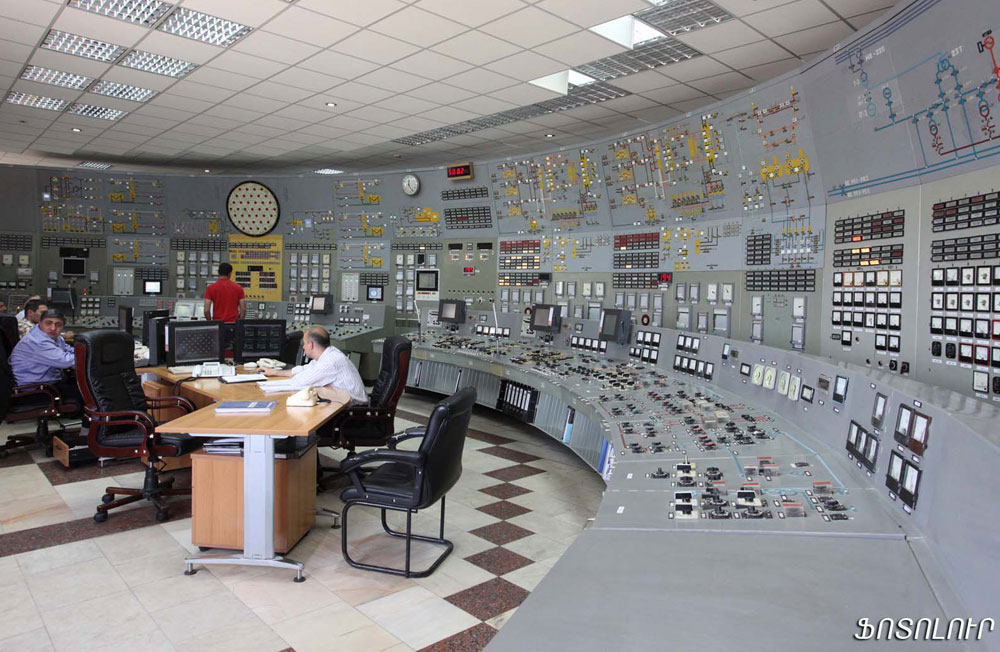Experts think that it is more purposeful to develop alternative energy resources with the billions that are intended to be spent on building a new nuclear power plant.
Metsamor Nuclear Power Plant, the Armenian Nuclear Power Plant (ANPP), exploitation is becoming dangerous, because the equipment is worn out. Experts of the NGOs dealing with both nuclear energy and environmental problems sound the alarm. The issue of ANPP functioning or not functioning was raised as early as in Soviet period and the problem at the time was the very obsoleteness of the equipment.
“If it was decided as early as in 1988 that the equipment of the nuclear power plant was obsolete, then 20 years after they would be completely worn out. These questions of ours are remained unanswered. If we are wrong, then let the people responsible for that area show documents that the equipment has been changed, updated etc. They haven’t shown us any such documents so far, or we should go and see that they are changed with our own eyes, but they would never let us enter the nuclear power plant. However, this is a national security issue and it must not be kept secret”, said Inga Zarafyan, the head of Ecolur NGO, during a conversation with Aravot. Mrs. Zarafyan gives importance to the issue also from the perspective of Armenia’s seismic stability. In response to our question whether it was already planned to build a new nuclear power plant and whether it was possible that we would not have such problem anymore, Mrs. Zarafyan said that the same risks remained with the new one too. Raw fuel for the nuclear power plant is imported from Russia. Since the nuclear power plant intended to be built will be more powerful, according to Mrs. Zarafyan, they will import more raw material from the Russian Federation, which, according to the expert, will make our country more dependent, “We gave Sevan-Hrazdan Cascade hydroelectric power plant in return for the raw fuel debt and if there is a new nuclear power plant they will import more raw material, what will we give in return?” According to the head of the NGO, the Cabinet made a decision to build a new nuclear power plant, but it doesn’t clearly say anything about radioactive waste, where those poisonous materials will be buried, “A very developed country like Germany cannot solve that issue till now. They bury the nuclear waste of their nuclear power plant outside the country, on some island, but they realize at the same time that they cannot always do that. How a small country like ours is going to solve that issue? We are under blockade and that waste is transferred by train under special conditions, i.e. we don’t have that ability. Our first cemetery is full; they fill in the second one in the territory of the nuclear power plant now. In a nutshell, these are problems that must be discussed publicly, in order that the public realizes what will be done. We don’t say let’s not have a nuclear power plant, live in the dark, the risks just have to be completely assessed and they have to let everyone know.”
Aravot also talked to Gevorg Petrosyan, the head of Biosophia NGO. He is convinced that the exploitation of the nuclear power plant is not only dangerous for ecosystem, but also for the population living in that area. “The majority of our population lives in the Ararat Plain, if there is an accident, the majority of the nation will be in danger.” In response to our observation that the government systematically claimed that there was no danger, Mr. Petrosyan said, “Do you really think that we have built or will build a safer thing, than the Japanese? They built a very safe thing too, they also calculated risks, but we saw what happened. No one is ensured from such accidents.” As for the ecosystem, according to Mr. Petrosyan, since the external waters of the Ararat Plain are used for freshening at the nuclear power plant, afterwards those waters are returned to the ecosystem in a warmer condition, thus, everything, flora and fauna, is in danger. And the new nuclear power plant planned to be built, as G. Petrosyan informed, will need more water, “It means that there will be lack of water in the Ararat Plain.”
In response to our question that taking into consideration that the nuclear power plant provided 40% of our country’s energy and we didn’t have any serious source of alternative energy yet, how purposeful it was to close the existing and not build a new one, Mr. Petrosyan said, “A few billions of dollars are planned to be spent on the new nuclear power plant, if that much money is invested in building alternative energy, solar, wind and hydroelectric power plants, we will not have such risks.” In response to another question whether weather conditions in Armenia were sufficient to build such alternative energy power plants that would guarantee the amount of energy provided by the nuclear power plant, Mr. Petrosyan said, “If we build a new nuclear power plant – the term of its exploitation is 35-50 years – i.e. sometime later an issue of closing or not closing will arise again. And if they think over alternative energy and draw up long-term plans and make serious investments, those issues will not arise.”
We will present the clarifications of the Ministry of Energy and Natural Resources and the State Nuclear Safety Regulatory Committee on these issues in the short run.
NELLY BABAYAN





















































